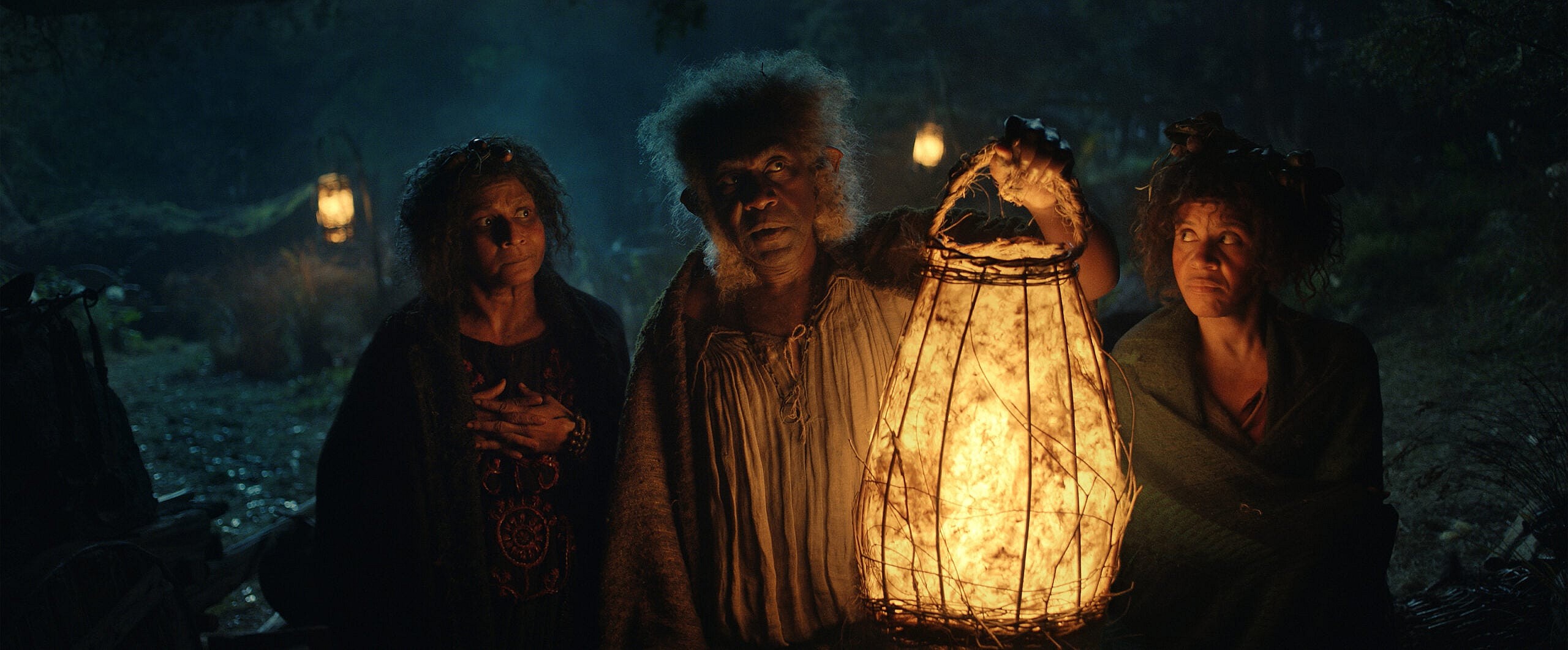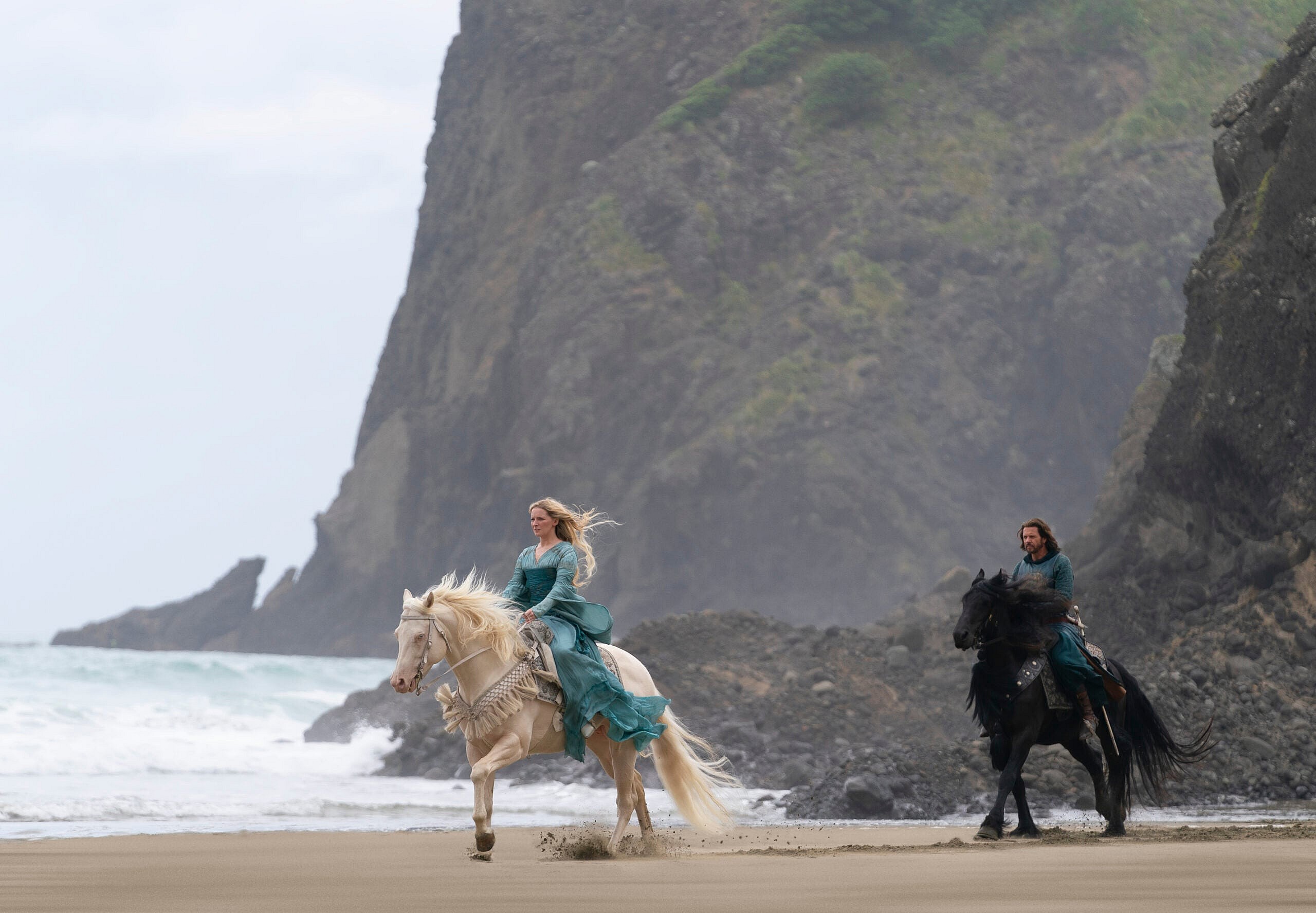Morfydd Clark Attempts To Defend Radical Changes To J.R.R. Tolkien’s Work In ‘The Lord Of The Rings: The Rings Of Power’

Galadriel actress Morfydd Clark recently attempted to defend the radical changes to J.R.R. Tolkien’s work in Prime Video’s upcoming TV series The Lord of the Rings: The Rings of Power.

Clark spoke with Inverse, where she claimed, “[Tolkien] was a really complex person who wrote a really complex world and this idea that anyone could know exactly what he would’ve wanted or what he would’ve liked is, I feel, nonsense.”
Unfortunately for Clark her comment is the one that is nonsense.

First off, it is quite possible to know what Tolkien would have wanted or what he would’ve liked especially when it comes to his stories because he wrote them.
He describes characters a certain way. He lays out extensive family trees in the appendices. He has them perform certain feats and actions as the story progresses.

For example in the prologue of The Lord of the Rings: The Fellowship of the Rings he goes in to extensive detail about Hobbits.
Tolkien writes, “Hobbits are unobtrusive but very ancient people, more numerous formerly than they are today; for they love peace and quiet and good tilled earth; a well-ordered and well-farmed countryside was their favourite haunt. They do not and did no understand or like machines more complicated than a forge-bellows, a water-mill, or a hand-loom, though they were skillfull with tools.”
As for their physical descriptions he writes, “Before the crossing of the mountains the Hobbits had already become divided into three somewhat different breeds: Harfoots, Stoors, and Fallohides. The Harfoots were browner of skin, smaller, and shorter, and they were beardless and bootless; their hands and feet were neat and nimble; and they preferred highlands and hillsides. The Stoors were broader, heavier in build; their feet and hands were larger; and they preferred flat lands and riversides. The Fallohiders were fairer of skin and also of hair, and they were taller and slimmer than the others; they were lovers of trees and woodlands.”

It’s not just Hobbits that he provides specific descriptions of. He also describes Tar-Míriel in The Silmarillion. Tolkien writes, “And last of all the mounting wave, green and cold and plumed with foam, climbing over the land, took to its bosom Tar-Míriel the Queen, fairer than silver or ivory or pearls.”
Gandalf also was heavily detailed by Tolkien when he’s first introduced in The Lord of the Rings: The Fellowship of the Ring, “At the end of the second week in September a cart came in through Bywater from the direction of Brandywine Bridge in broad daylight. An old man was driving it all alone. He wore a tall pointed blue hat, a long grey cloak, and a silver scarf. He had a long white beard and bushy eyebrows that stuck out beyond the brim of his hat. … That was Gandalf’s mark, of course, and the old man was Gandalf the Wizard, whose fame in the Shire was due mainly to his skill with fires, smokes, and lights.”

Tolkien had clear visions of the Hobbits, Tar-Míriel, Gandalf and all of his other characters and creations. He would not have provided such deep descriptions if that was not the case.
Again, to claim that we can’t know what Tolkien would have wanted or what he would have liked is nonsense. He wrote what he wanted and we can read it.

Not only did he provide these apt descriptions in the novels, but he extensively answered questions to numerous individuals in letters explaining his choices and why he wrote the stories the way he wrote them.
In Letter 182 to Anne Barrett Tolkien made it clear there were no Hobbits in the First or Second Ages. He explained, “shall certainly now, if I am allowed, publish the parts of the great history that was written first—and rejected. But the (to me v. surprising) success of The Lord of the Rings will probably cause that rejection to be reconsidered. Though I do not think it would have the appeal of the L. R. – no hobbits!”
He reiterated this in Letter 227 to Mrs. E.C. Ossen Drijver writing, “I am now under contract engaged (among alas! other less congenial tasks) in putting into order for publication the mythology and stories of the First and Second Ages – written long ago, but judged hardly publishable, until (so it seems) the surprising success of The Lord of the Rings, which comes at the end, has provided a probable demand for the beginnings. But there are, I fear, no hobbits in The Silmarillion (or history of the Three Jewels), little fun or earthiness but mostly grief and disaster.”
It seems pretty clear that we can figure out that Tolkien did not want Hobbits in the Second Age because he definitely said they were not in it in two letters.

To reiterate a third time, Clark’s comment is the one that is nonsense. We can know what Tolkien wanted and would have wanted. Her real goal is more than likely another attempt to silence critics that see what The Lord of the Rings: The Rings of Power really is: a big-budget Prime Video production that is Tolkien in name only.
It has the name of Tolkien’s work and it has the names of the characters he created, but the heart and soul that he put into the creation is not there because the production team cut it out and removed it replacing Tolkien’s story with their own vision that is anything but Tolkien’s.

In fact, Clark’s co-star in the show, Lenny Henry, even admitted that the series no longer follows Tolkien’s writings, “Of course, if you go back, there’s going to be that thing that prevails because the books don’t say . . . although some of the characters are described as hard skinned and darker in complexion . . . But that was then, this is now and we’re telling the story now.”
And given Henry’s comments here it seems clear that he figured out what Tolkien wanted or would have wanted because that’s the way he wrote it in his books.

And maybe the biggest kicker is that Tolkien actually provided extremely detailed criticism for a film adaptation of The Lord of the Rings in Letter 210 to Forrest J. Ackerman.
He prefaced his critiques writing, “The canons of narrative an in any medium cannot be wholly different ; and the failure of poor films is often precisely in exaggeration, and in the intrusion of unwarranted matter owing to not perceiving where the core of the original lies.”

What do you make of Clark’s comments?
